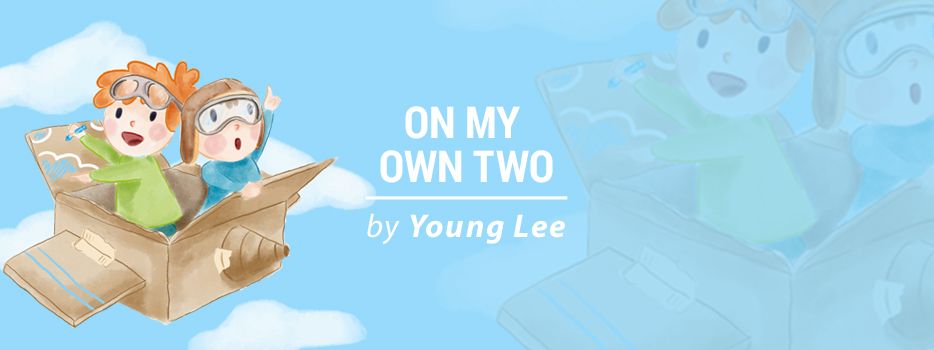Sometimes I Struggle to Find the Right Words to Describe CMT

It’s the reason I wore a T-shirt emblazoned with the words “Charcot-Marie-Tooth” to begin with: to spread awareness and to encourage questions. But when I heard a voice behind me ask about CMT while I was standing in the deli line at my local Harris Teeter, it still took me by surprise.
Every time I’ve talked about CMT previously was on my own initiative and of my own accord. Perhaps a discussion started when someone observed my gait and said something like, “You’re walking with a bit of limp. Did you hurt yourself?” Or, when I was in grade school and wore ankle-foot orthoses, a conversation about CMT might have begun with a question about my AFOs. But in each of those situations, I had the option to either formulate a response or deflect. And I often chose to deflect.
This time, when I turned around to face the source of the voice and saw a woman around my mother’s age asking again if I had CMT, I didn’t feel deflecting would be appropriate. In fact, I thought it might be a moment I had long hoped for: meeting another CMTer “in the wild.”
I responded, “Yes” and was slightly disappointed when she asked, “Well, what exactly is it?” Clearly, she wasn’t a fellow CMTer.
I would have thought I’d have a better answer after having CMT all my life. However, at that moment, I struggled to find the right words.
How do you summarize something that feels so incredibly big and seems to encompass many aspects of your life at times? Ultimately, I ended up just vomiting words.
I said something about CMT being genetic and then I said something about muscles being weakened or atrophied. And I think I mentioned myelin sheaths.
It was kind of a train wreck. I was too vague and yet too detailed at the same time.
But the woman was kind and understanding enough. It turned out she saw the words “disease” and “tooth” on my shirt and assumed CMT was a tooth disease (a common mistake when folks first hear about CMT). She thought perhaps it would be something her friend, who had been having pain in her teeth recently, would be interested in hearing about.
CMT might not have been exactly what she thought it was. But, after our conversation, at least there was one more person in the world who had heard of CMT. And that’s a small victory.
Still, the whole experience reminded me that I should always be ready to offer a quick explanation of the disease, especially when I wear my CMT shirts. Perhaps all CMTers should practice a quick explanation of the disease that’s conversational but concise, something that hits all the important points but is not too technical.
After thinking about it for a while this week, I’ve come up with the following:
“CMT is one of the most common genetic neurological disorders. It has many symptoms, but it commonly affects muscle strength and dexterity. Its effects are most pronounced in my hands and feet. But CMT can affect others differently. The disease gets worse over time and there’s currently no cure. CMT is an important aspect of who I am and it definitely sucks some days, but it doesn’t define my life and it certainly doesn’t define who I am.”
I’m sure I’ll end up refining my verbiage as time goes on and as I continue to grow and develop my thoughts on both CMT and who I am as a CMTer. But it’s important for me to think about.
Have you thought about how to explain CMT to those who ask? Share how you do it in the comments below.
***
Note: Charcot-Marie-Tooth News is strictly a news and information website about the disease. It does not provide medical advice, diagnosis, or treatment. This content is not intended to be a substitute for professional medical advice, diagnosis, or treatment. Always seek the advice of your physician or other qualified health provider with any questions you may have regarding a medical condition. Never disregard professional medical advice or delay in seeking it because of something you have read on this website. The opinions expressed in this column are not those of Charcot-Marie-Tooth News or its parent company, Bionews, and are intended to spark discussion about issues pertaining to Charcot-Marie-Tooth.






Rich Buchsbaum
I compare CMT to diseases people know.
"Its a cross between MS, MD, and even ALS"
works for me.
Doyle Stein
I basically say it's similar to a missed called call. Your brain is calling all the muscles to get into action but they miss the call due to a poor connection. That usually is simple enough to encourage them to ask more questions. Also depends on my mood. Sometimes more elaborate, sometimes less.
Laura Heiselman
I state, "CMT is one of the most common neuromuscular diseases that most know nothing about. When the cable (myelin sheath) that covers nerves is damaged, the brain and muscle can't get good reception (messages). Hence, the result is atrophy, neuropathy, funny gait, tendency to fall down, footdrop with many requiring assistance with orthotics, walkers, or wheelchairs."